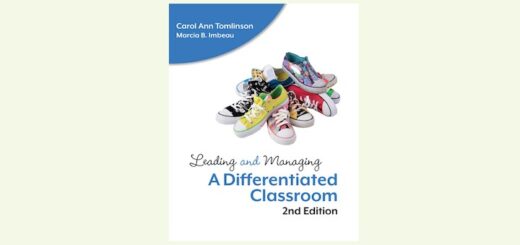Providing Extra Credit: Positive or Negative?
By Barbara R. Blackburn
When I was teaching, I struggled with the whole concept of extra credit. Most other teachers offered it, so I did too. But I was never sure if students were doing something valuable. It never seemed to accomplish what I thought it would.
The students who usually earned it didn’t really need it, earning an A plus instead of an A or an A instead of a B. It also seemed to overemphasize points versus learning.
A few years ago one of my graduate students was furious because I wouldn’t give her extra credit. She was on the border between an A and a B and had only completed a portion of an assignment, which lowered her overall grade.
She wanted me to basically increase one low grade because she had done a good job “the rest of the time” she was in my course. In effect, she wanted me to give her extra credit on a very poor assignment because…she wanted it.
What would you do in that situation? Would you allow her to finish the assignment and turn it in late for full credit? Would you give her the opportunity to complete an extra assignment to make up the difference? Or would you come up with another alternative?
Looking at Extra Credit through a Grading Lens
Ultimately, the issue of extra credit should be placed into the greater context of grading. What is your purpose when you grade? It might be to measure understanding, or provide accountability for learning, or compare students in terms of achievement.
You have to determine your purpose before you can decide how or if you want to use extra credit.
► To Measure Understanding
First, if you are using grading as a tool to measure understanding, then everything you grade should fulfill that purpose. I provide students an opportunity to show me they understand the content, and a grade demonstrates how well they perform. In this case extra credit may or may not match your purpose. If it is just to increase a grade, then it’s not a good fit. If a student didn’t understand your content, studied, and wants to show you what they have learned, then it might be justified.
► To Provide Accountability
If grades are designed to provide accountability for students, then extra credit may not be your best option. Extra credit typically is “another chance,” making up for something that didn’t happen the first time. One could argue that extra credit undermines accountability. But, as in the’ measuring understanding’ section above, if students want to show you they have learned something, extra credit could be an option.
► To Compare Students
Another common use of grading is to compare students. We do this when we post an honor roll, place students in classes or groups based on grades, or reward students in other ways for their grades. In this case extra credit can undermine a true comparison, and, in some ways, reward students who may have extra resources or help outside of class – completing an extra project for example.
What’s the Solution?
So what is the solution? From my perspective extra credit can become a personal decision. Do you believe in an extra chance, depending on the situation, and, if so, does it depend on the circumstances? After more than 40 years in education, I have come down to this simple answer for myself: I allow students to redo work to show increased understanding, but I don’t provide options for extra credit.
What this means is that if students write an essay or complete a project and someone makes a C or below, I will provide feedback and allow them to rewrite it up to a B. This is in addition to the support I provided prior to their turning it in. I actually score the assignment a NY/C or Not Yet Finished/C.
Next, if students take a formal test, I allow them to redo missed items. I use a simple form such as the English and Math versions below.
As you can see, these “redo forms” serve several purposes. They not only give the teacher valuable information about student motivation and understanding, they provide some feedback about the effectiveness of our instruction.
A Final Note
You may be wondering how I handled the situation with my graduate student. Because she simply didn’t turn in part of the assignment, her grade was lowered, and she asked for extra credit. I chose not to offer her that option, and she complained to my department chair, who asked me to reconsider.
I did but could not justify giving extra credit simply because she was a good student and didn’t like her grade. She ultimately earned a B, and complained on an ongoing basis that I “cost her an A.” Was I wrong? I don’t think so, but you may disagree.
I do believe in second chances, but only when students can show an increase in student learning. Using a Not Yet Finished/Grading scale and handouts for reworking tests is a more effective option than extra credit.

Barbara is the author of Rigor and Assessment in the Classroom (Routledge/EOE, 2017) and many other books and articles about teaching and leadership. Visit her website and see some of her most popular MiddleWeb articles about effective teaching here.









































Most of what the author talked about isn’t extra credit in its common use. Extra credit is giving students points for things that have nothing to do with the learning. What she described were bonus questions. Neither should be allowed by school/district policy if we want grades to meet their primary purpose – communicating achievement on the learning goals. Her personal story had nothing to do with extra credit, it was about what to do when a student had incomplete evidence of learning. In principle students should always be provided with the opportunity to make incomplete complete.
Thank you for addressing this timely topic. Regardless of how we individually define what constitutes extra credit, you make several important points about grading and redoing work. First of all, while students might want to do something extra to raise their grade a few points, whatever they do should demonstrate deeper or more complete understanding of the skills and concepts they are learning. Secondly, you provide practical tools that guide students to be metacognitive by analyzing their errors and figuring out how they can improve their performance on similar tasks. Many teachers ask students to correct their mistakes but stop short of asking for students to reflect on why they made those errors or to take responsibility for demonstrating when they are ready to redo parts of an assignment. Finally, you provide an important reminder that a grade should only reflect what students have learned…whether it be on the first try or the second, or third. This is at the heart of equitable grading.